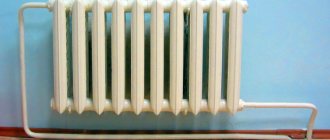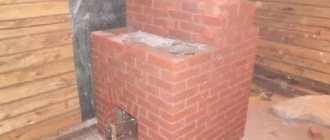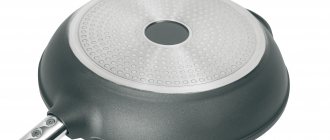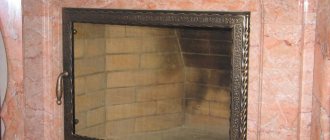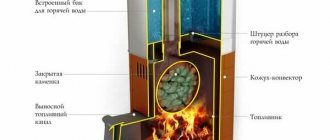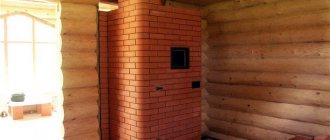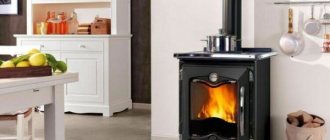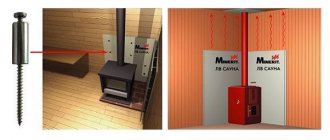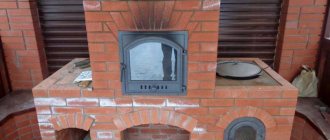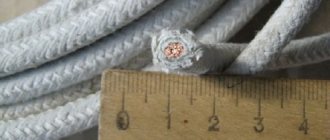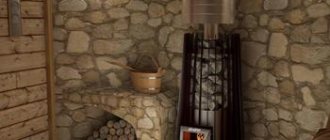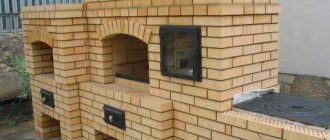Types of cast iron decking
The hob for a cast iron stove can be produced in two types: prefabricated and solid. The differences between these types are insignificant, because both perform their main functions: heating and cooking.
Prefabricated slabs
These structures consist of a sheet of cast iron and several round parts of different types. Cast iron stove rings fit into each other like a puzzle. Due to the fact that the surfaces have gaps, the metal does not deform under the influence of high temperatures.
And the different diameters of the rings allow you to cook food in different dishes as quickly as possible. After all, to heat a large pan of water, you can use a circle with the largest diameter, and it is more convenient to place an iron mug on the smallest part.
Solid slabs
A cast iron sheet for a stove with a solid surface or burners of standard diameter belongs to the category of solid decks. Due to the integrity of the structure, they do not have any gaps for the narrowing and expansion of the metal.
This feature reduces the practicality and durability of such products. But they also have their advantages. Easy installation and relatively low price due to the simplified design are liked by many buyers.
Which is better - steel or cast iron?
The hob for the stove is made of cast iron or metal. Which product has more advantages: cast iron or steel stove plate?
There are a huge number of manufacturers of these products who insist on the advantages of cast iron over steel.
Advantages of cast iron decking:
- strength and durability. A cast iron stove will reliably serve you for decades.
- heat dissipation Due to the presence of certain chemicals in the cast iron used for casting sheets, it has better physical characteristics compared to steel.
- resistance to deformation and corrosion.
- resistance to temperature changes. Due to this, the cast iron hob for the stove retains its original appearance throughout its entire use.
Some manufacturers focus on some other advantages of cast iron compared to steel: cast iron does not dry out the air as much. You don't have to use humidifiers or other devices to maintain indoor humidity.
The main advantages of steel plates are:
- fast heating. In just a couple of minutes the surface heats up to the desired temperature. But such a stove cools down much faster than a cast iron one.
- light weight. Typically, steel plates weigh ten times less than cast iron. This allows for quick installation without much effort. But due to their low weight, such products are able to withstand a small load. If you will be using fairly heavy cookware, it is better to give preference to a cast iron stove.
- low cost. Prices for cast iron stove stoves are higher than for steel stoves. But their service life is much longer.
Conclusion: If your budget allows, use a cast iron surface, it will last longer. If your budget is limited, buy a steel plate.
Types of cast iron cooking floors
Regardless of the configuration, all tiles perform an excellent heat transfer function and you can cook food on them. Cooking decks come in two types – prefabricated and solid. The difference between the former is in the thermal gaps between the parts, due to which the expansion of the heated metal is compensated. But each type also has additional features.
Prefabricated slabs
Structurally, they look like metal panels with several rings of different diameters that are installed into each other. The result is a single plane. Prefabricated stove stoves can have from one to six burners, and their size can be varied for specific cookware by removing and putting on the rings.
Cast iron prefabricated stove slabs are characterized by a long service life and resistance to temperature changes. Due to the inter-ring gaps, cast iron, which expands when heated, is not deformed or damaged.
To make the products more durable, they are equipped with stiffening ribs on the inside. A significant advantage of such an addition is an increase in panel temperature and increased efficiency.
Solid slabs
These are sheets of cast iron with one or two round burners of constant cross-section. There are also blind models, which are a solid sheet without burners. One-piece models have almost no expansion gaps, which is why it is not as practical and durable as its prefabricated counterpart. Due to the lack of free space, deformation of the heating panel may occur. But solid stove slabs have advantages - ease of installation and low price compared to prefabricated ones.
Solid slab
Prefabricated slab
How to choose?
Choosing a cast iron deck for your stove is not difficult. To buy a quality product, the installation of which will not require much effort, it is enough to take into account several nuances.
What are the sizes of cast iron sheets?
Cast iron sheets can be square or rectangular. The most popular are rectangular slabs. The surface dimensions directly depend on the size of the oven.
The standard dimensions of a cast iron stove for a stove are:
- 34 by 41 cm,
- 71 by 41 cm,
- 66 by 41 cm,
- 51 by 34 cm.
For a non-standard stove, you can order the service of manufacturing a cast iron sheet with individual parameters in a specialized store. But it will cost significantly more than standard products.
Number of burners in different models
Typically ovens have two burners. But their number can vary from one to six (it all depends on the surface area). Solid cast iron sheets may have no holes at all. But the cooking time on this type of stove can be long due to the slow heating of the cookware.
Other criteria for choosing a quality product
You should pay attention to the quality and composition of the material from which the stove is made. If you find chips, scratches and other various defects on the surface, then it is better to refuse the purchase. A high-quality product has a smooth surface and its weight is quite large. There are no lightweight cast iron stoves.
It is worth taking the time to study the composition of cast iron. Cast iron, which is used for smelting, is a combination of 2% carbon with iron. But if it contains any components unknown to you, be sure to ask the seller about them. After all, some chemical elements are not environmentally friendly and can harm your health.
Nuances of installing slabs
Not only the efficiency of the panel, but also the safety of users depends on the choice and quality of the cast iron installation. A poor-quality product and/or incorrect installation can lead to destruction of the slab during operation. Considering the dimensions of the dishes, the high temperature and the difficulty of quickly neutralizing the problem, the selection and installation must be approached with great responsibility.
A few recommendations regarding:
- there must be a 5 mm gap in the horizontal plane between the stove and the cooking floor; the distance between objects compensates for thermal expansion and increases the service life;
- a large burner is installed above the firebox;
- the stove must be installed strictly horizontally; to correct the horizon, use a bubble level; in addition, the base must be level - panel play is not allowed;
- the cast iron sheet is installed on a mixture of clay and asbestos - these materials are resistant to high temperatures; solution preparation scheme: clay is diluted with water;
- crushed asbestos is added to the mixture of water and clay;
- Add water little by little to the solution until a creamy mixture is formed;
Please note that horizontal gaps must be left empty, otherwise the cast iron will destroy the brickwork;
the upper masonry row (on which the slab is installed) is “ringed” with a metal corner - this makes the structure stronger.
Installing a stove on a stove with your own hands
The installation process should begin by studying this issue on specialized sites, and only then start working.
For a brick oven
Installing a cooktop on a brick oven requires some effort. How to properly install a stove on a brick oven?
The following recommendations should be followed:
- There is no need to embed the slab end-to-end. You need to leave a gap of 5 millimeters around the perimeter of the panel. After all, when heated, cast iron tends to expand, and thanks to this installation, the brick oven will not collapse.
1 - During installation, you can use a solution of clay and asbestos.
2
3
4 - A level should be used to lay the slab. This way the cast iron flooring will lie perfectly flat.
- The largest burner in diameter should be installed above the firebox.
- For structural strength, the top row of bricks must be equipped with a piece or angle of steel.
- To increase the strength of cast iron, the first lighting should be done as follows: heat the stove for a long time (7-8 hours). Every hour the temperature should rise by about 70 degrees. Use small logs for the fire, then you can throw in larger ones. After this, the oven should be allowed to cool naturally. This procedure is the key to successful and long-term operation of the entire furnace.
5
Metal
Installing a cast iron surface on a metal stove has the same steps. But it should be taken into account that the cast iron stove has quite a lot of weight.
The steel structure may not withstand it. It is necessary to strengthen the stove additionally: with a corner made of cast iron or other stable metal.
Two types of cast iron stoves
The material for them is gray cast iron grade SCh . It molds well and has a sufficient margin of strength and elasticity. To improve performance, silicon, sulfur and manganese additives are added to the composition, and the carbon content is about 2% .
Cast iron is not afraid of high temperatures and retains its shape at any degree of heating. The surface does not oxidize or rust over time due to the durable oxide film formed during the casting process.
The slabs are either solid or collapsible . Collapsible ones consist of several rings with a small thermal gap. It is necessary for proper temperature compensation.
Monolithic surface with burners
This is a solid sheet of metal with a thickness of at least 8 mm. It can be equipped with fixed-sized burners (recesses or protrusions in food preparation areas). Blind slabs do not have recesses. Hobs of this type are the easiest to install and have a low cost , therefore they are very popular in inexpensive ovens.
Disadvantages of solid slabs:
- the inability to regulate the temperature in the burner, you have to heat the entire surface;
- the lack of gaps makes the stove very sensitive to strong heat .
Collapsible cast iron construction
A special feature of the design is several rings of different diameters , which fit into each other like a puzzle. By removing the rings, you can select the optimal caliber of the burner for a specific pot or frying pan.
This scheme provides many advantages over the traditional one:
- High reliability and surface rigidity. It is not afraid of heating due to the gaps between the parts of the burner, which protect the metal from deformation.
- Possibility to regulate the heating intensity by opening individual sections. Cooking takes place over an open fire and does not require complete heating of the entire surface. This saves time and wood.
Overview of cast iron decking
The most popular are Finnish models. But domestic production also produces decent and high-quality goods.
- Pilsa (HTT) Plate 3A. Material: cast iron. Black color. Size: 985 x 650. Diameter of burners: Ø 32, 393 mm. Weight: 51 kg. Price – from 49 thousand rubles.
- 2-burner stove “Russian casting”. Cast iron stove 710x410. Weight: 25.08 kg. Price – from 3000 rub.
- 2-burner stove "R". "Furnace casting Russia". Cast iron stove for oven 700 cm by 400 cm. Weight: 25 kg. Price from 3 thousand rubles.
- Cast iron stove for cauldron H2521 “HALMAT stove casting”. Dimensions: 505×455. Weight: 21 kg. Price from 15,000 rub.
- PLATE 5A SVT 301. Manufacturer: SVT. Dimensions: 460 x 700. Price 0t 17,000 rub.
Tips for increasing the life of cast iron stoves
To ensure that your stove hob lasts as long as possible, you should follow these simple rules:
- to lay the slab, use liquid cement mortar, maintaining a distance of 5–6 mm from the upper edge of the oven;
- The largest burner should always be located above the firebox;
- the brickwork of the top row must be strengthened with a steel angle;
- Do not forget that there should be gaps of up to 2 mm along the entire perimeter of the slab to prevent deformation and cracking of the metal;
- correctly load the stove for the first time and heat it, gradually warming it up for about 8 hours, and increasing the temperature by 70–80 degrees every hour. For proper heating, you need to start heating with shavings and wood chips, and then add larger firewood. After heating the stove for 8 hours, it must be left to cool until the firewood is completely extinguished.
If the buyer himself is not confident in his competence in installing cast iron slabs, then it is better to seek the help of professionals. Thanks to their special knowledge and many years of experience, they will help you save your time and nerves. This is the case when it is better to give way to a specialist, so that later you do not have to pay for your own inexperience.
And then, when you have at your disposal a beautiful stove with a properly installed cast-iron stove on the surface, you can fully enjoy the warmth and comfort emitted by such a design.
Instructions for use and care
Careful handling of the product will increase its service life.
- The correct first firebox is the key to the durability of the flooring. It is necessary to gradually light the firebox (shavings and small logs first) and allow it to cool for several hours.
- Mechanical damage should be excluded: chips, scratches.
- Rust may appear during storage of the stove. You should not rip it off or try to remove it in other ways. It will disappear during use.
- Do not overload the device.
- It is necessary to ensure that moisture does not fall on the heated flooring.
With proper use and proper care, your stove will last for many years.
Installation details
Gaps are left between the brick and the slab so that the expansion of the metal does not destroy the masonry
During installation, the thermal expansion of various materials must be taken into account. For example, brick and cast iron are affected completely differently by high temperatures. If, during installation, the cooking floor is tightly walled into the masonry, soon such a stove will simply fall apart as a result of the expansion of the metal.
Installing tiles on a brick stove:
- A horizontal 5 mm gap is left between the heating structure and the panel. Thanks to it, thermal expansion between objects will be compensated and the service life will increase.
- The hob is installed in a strictly horizontal position on a flat base - the tiles should not play. To determine whether there are any deviations along the horizon, use a building level. The largest of the cast iron circles for the stove is located above the combustion compartment.
- The panel is mounted on a clay-asbestos composition. These materials are resistant to high temperatures. You can make the solution yourself by grinding and mixing the ingredients with water, or dilute a ready-made store-bought solution. The consistency should be similar to liquid sour cream. When installing, make sure that the horizontal gaps remain empty, otherwise the stove will quickly collapse.
- An asbestos cord or sheet is laid under the base of the panel.
- The top row of bricks, on which the cast iron sheet is placed, is “ringed” with a metal corner - this will give the structure strength.
Due to gradual heating, the internal stress of the cast iron is relieved, and the stove plate acquires greater strength. The procedure has a positive effect on the further operation of the stove and tiles, preventing bending and cracking.
Installation on a metal stove follows the same principles. But it is necessary to take into account that cast iron is a heavy material, so a brick structure can deform under its weight. Additional reinforcement of the stove with a cast iron corner is required. You can use a “support” from another resistant material.
Conclusion
A cast iron stove stove is an excellent option for cooking and heating the room. A large selection of these products will satisfy even the most fastidious buyer.
Cast iron material is characterized by heat resistance, durability, and ease of use. A high-quality cast iron stove will serve you reliably for several decades.
But its purchase should be made in a specialized store. Experienced consultants will help you choose between a prefabricated or solid slab, and will also select the right size at an affordable price.
Attention must be paid to the quality, absence of defects and weight of the product. You can even install this flooring yourself. To do this, it is worth considering only a few nuances.
When melted and used, cast iron decking will remain in its original condition throughout its entire use. It will become not only a functional item, but also a decoration for your interior.
Main types of cast iron stoves
Installation and use rules
To install a cast iron cooktop for a wood stove, observe the following points:
- Lay it on top of a thin, liquid layer of cement mortar, the distance between the stove and the upper edge of the oven should be 50-60 mm.
- Before installation, ensure that there are thermal gaps in the stove (at least 5 millimeters). This will help the masonry not crack as the oven heats up. Otherwise, you will have to seal the cracks with clay mortar.
- To strengthen the structure, secure the top of the brickwork using angle steel.
- The largest burner should be located above the firebox.
- After installing the stove, heat it for 8 hours until the temperature reaches 640 degrees (for every hour the temperature should increase by 70-80 degrees). Follow the following algorithm:
- first heat with shavings and wood chips;
- then start tossing larger logs;
- After eight hours, leave the stove to cool until all the wood has gone out.
The purpose of this procedure is to prevent the appearance of cracks on the surface of the stove, and this is the key to good operation of the fireplace in the future.
If you follow all the installation and use rules, you will extend the life of your cast iron stove and stove and ensure the safety of yourself and your loved ones. Cooking decks made of cast iron can also be used in solid fuel boilers, double-circuit stoves, as well as stoves with a water circuit.
A cast iron stove is a device that is used in the installation of fireplaces, stoves, hobs, the operation of which can be aimed at cooking food or for heating a room. The cast iron stove plate can be composite or solid. A hole for the burners may be built into the design of the stove, but it may not be (such stoves will be solid).
